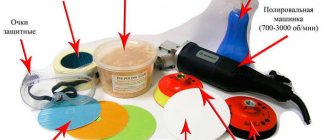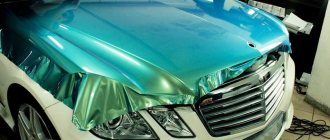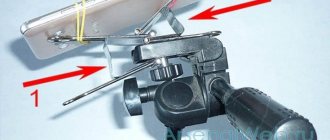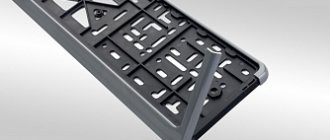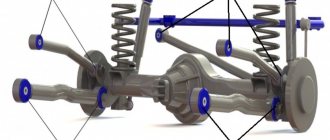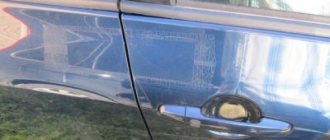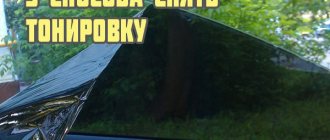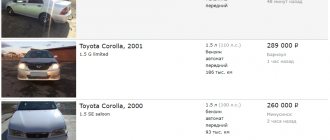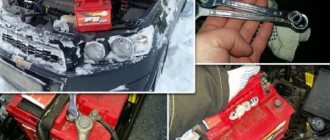Jib for straightening the body
There are three large groups that include tools for straightening cars:
- Hand tools for straightening a car
- Spotters for straightening body panels
- Slipways for restoring vehicle geometry and correcting distortions
We especially highlight the platform slipway among other tools for straightening. This device uses modern technologies to correct the geometry of car bodies.
To understand the construction of a slipway, you don’t really need to be a genius. A slipway is a platform on which there is an engine and a lift. The body itself is mounted on a platform; for this purpose, so-called clamps are used.
slipway for straightening
The clamp is connected to the metal using a magnet or other means. The device can move over the entire area of the body; this achieves his amazing ability to get anywhere. The slipway is a convenient device because it can be supported by machines weighing up to 5 tons.
By the way, if you come across cars with locked wheels, doors, etc., the slipway will handle it. This distinguishes it from other straightening tools.
It should be recalled that a lot of measuring instruments are included with the slipway. They help track the quality of the adjustments made. If there is a strong distortion in the body, this will help correct the situation.
Straightening with a spotter
A significant part of body repairs in auto repair shops involves correcting dents on doors, sills, and fenders of a car. The spotter helps save money and time when repairing dents. Do not forget to properly prepare the part before work.
Straightening a car begins with the fact that you need to strengthen the spotter. Some devices support magnetic attachment. This feature helps to close the door completely, and work will become more convenient.
After this, weld the washers and correct the defective area, catching on each of the washers in turn; use a reverse hammer.
A stand for pulling a body, assembled with your own hands or purchased in a store, is the most important tool that all straightening craftsmen use. Without it, straightening is simply impossible.
spotter
As for hand tools, they can also be divided into types:
- Percussion instruments such as mallets and mallets
- Spoons and supports
- Hooks and levers for pulling metal
If you have all these items, then repairs will not be difficult for you. In addition, you will need sanding equipment, such as a straightening file, abrasive mixtures, and some electrical units.
Hand tools: mallets and hammers
Hammers intended for straightening differ significantly from construction hammers. The main difference lies in the form of the working striker. It is slightly rounded, and at the same time well polished. On its opposite side there is a beak-shaped tip.
If you wish, you can create such a hammer yourself if you have the ability, desire and tools for this. Note that straightening work does not require heavy hammers, so straightening tools often weigh little but bring a lot of benefits.
You can often find hammers that are smelted from non-ferrous metals or ordinary metals: aluminum, copper or brass. Recently, you can also see textolite tools or hammers made of hard plastic on the shelves.
Strikers made of such material cause less damage to the treated surface. If you need to preserve the paint layer of the body, you can use rubber hammers.
In the work of a master straightener, only four types of hammers are used:
- Hammer for straightening and rolling out;
- Embossed analogue;
- Inertia hammer;
- Hammer for bending flanges.
Straightening hammer
This type of hammer is the main tool that is used to knock out and straighten a part. The straightening hammer comes in different shapes. In such a hammer, it is important that the striker part is firmly seated on the handle and does not play - in this case, straightening the body with your own hands will go well.
In addition, make sure that the handle auger does not have burrs or cracks, because the safety of operation depends on this.
In addition, you need to know that the handle of this tool is usually not thick. The hammer should spring back during operation, and a thick handle will only interfere with this. As for the striker, one side should be made round, while the other should be square. This will make the tool much more versatile.
Hammer for embossing
This is not the same as an editing tool. No, it looks like a blunt cone. To get an idea of what it looks like, cut off the tip of the cone. Or buy a hammer for embossing at the store.
Inertia hammer
An inertial hammer is a very useful thing. He can extract problem areas of the body. It can even do this in places where other hammers cannot always reach - this is its advantage.
It has a limiter, due to which the part quickly turns into the same. An inertial hammer is usually equipped with a number of attachments. Use the right attachment for the right application.
Flange hammer
The flange straightening hammer is equipped with feathering on both sides, which is rotated at an angle of 90 degrees.
Kiyanka
The mallet is an instrument that is on everyone’s lips. This tool will always be useful to you; it is made from the hardest types of wood. Moreover, the mallet handle is made of ash. Ash provides it with excellent qualities.
mallet
Its firing pin is in the form of a cylinder. Meanwhile, since there are few forests left, mallets are starting to be made from rubber - very durable. They are also made from synthetic materials. You can even find them made of leather.
More expensive models are made so that the strikers can be changed during operation - this is really very convenient. This straightening tool is suitable for working with aluminum or steel.
Hammers and mallets for body work
Straightening hammers differ significantly from conventional construction hammers, which we are well familiar with. One of the significant differences is the main working striker, which is made somewhat rounded and very carefully and accurately polished. The next difference is the side opposite the main working one, as it has a peculiar “beak” shape.
You can make a set of similar hammers yourself. And heavy tools are practically not used in straightening work, since generally the weight of one tool is about two hundred grams.
In addition, today hammers that are made of non-ferrous metal or an alloy of metals are very widespread. For example, these are copper, brass, and aluminum hammers. Plastic and textolite hammers are also very often used. Such strikers deform the surface of the body much less. And if during straightening it is necessary to preserve the paint layer of the body, then only rubber hammers are used.
There are four main types of hammers that are used in straightening work:
- A special hammer for rolling out or straightening;
- Embossed analogue;
- Inertia Hammer;
- Devices for bending flanges.
Straightening hammer
Hammers and mallets for body work
Straightening hammers are perhaps the main tool used for drifting and final straightening. These hammers can come in various shapes. It is necessary to take into account that the firing pin must be carefully placed on the neck of the handle, so that it is absolutely motionless. And the handle auger should be free of burrs and any cracks.
It is not recommended to make the handle for this tool excessively thick. This is justified by the fact that during operation it should spring well. It is also recommended that one side of the striker be made round and the opposite side made flat and square.
Embossing hammer
The embossing hammer has the shape of a kind of blunt cone. The meaning of this hammer is the final rollout.
Inertia Hammer
Inertial devices are necessary in order to extract hard-to-reach defects due to their working part hitting a special limiter - a bumper. To work, you need to have a set of similar attachments.
Flange Hammer
The flange hammer is equipped with two feathers that are rotated ninety degrees.
Mallets
Now about what concerns mallets. Their heads are mainly made of very hard wood, and the handle is made of ash. An ordinary mallet, which has a round shape, is equipped with a cylindrical striker. And today such straightening tools are made of rubber, soft materials or rawhide.
Rubber mallets, which have replaceable strikers, are very well suited, for example, for straightening aluminum. They can also be used for repairing or straightening steel.
Backing dies, supports, anvils in straightening
To perform straightening, specialists use a variety of supports that replace tools. Usually these are large metal bars. They match the size of the part that requires adjustment.
You should have a set of such supports so that they help you in different situations when you need to straighten the body.
Obviously, different damage requires different tools, since each defect has a different metal thickness, curvature, and size.
Since you are using a hammer, then an anvil is the thing that immediately begs to be paired with it. An anvil is placed on one side of the damaged part, and a hammer is struck on the other. And if you have chosen the substrate stamp well, then the straightening process will go quickly and without much effort on your part .
However, if you do not have any support nearby that would fit a particular dent, you can use any objects that will serve as support. Such a thing could be a very large hammer or an ax - or anything.
Before using such a makeshift anvil, you must thoroughly clean its surface. The smoother its surface, the less noticeable the marks from hammer blows will be on the part when straightening the body is completed.
Supports, anvils and backing dies
Supports, or anvils and backing dies
Very often, to straighten the body it is necessary to use all kinds of supports. Supports, as a tool for straightening the body, are huge metal bars, which in their shape best suit the place on the body that requires straightening. It is recommended to have a special set of supports that are designed for various areas of the body that have different radii of curvature, different thickness, weight and size.
Basically, an anvil and a hammer are a kind of inseparable pair, which are placed on opposite sides of the damaged area of the body. The more carefully and accurately the configuration of the backing stamp is selected, the faster and easier the work process is.
If you do not have specially purchased or self-made support on hand, then as a last resort you can use any items that most closely resemble support. For example, it could be a huge hammer, a sledgehammer, an ax and much more, which you will probably have.
The surface of a homemade anvil must be thoroughly and well cleaned and polished. This is justified by the fact that the quality of the anvil will determine how noticeable irregularities will remain on the surface of the straightened body.
Spoons and impact blades
Spoons and impact blades for body work
Special spoons are used to pull out and level the metal of the car body. In addition, they can even be used as support in places where access to the back of the body is significantly difficult. The selection of this tool depends solely on the original shape of the object that will be straightened, as well as on the level of difficulty of access to the back of the body and, of course, the necessary actions, for example, knocking out or straightening.
Straightening the roof of a car can be done using a regular universal spoon, rather than using a curved support. The possibility of using a special lining, which is used to protect the spar from so-called local damage and a decrease in pressure in the same place due to the distribution of the pulling force at the base of the support, depending on the gap in this area. When pulling upward with constant effort, do not forget to accompany your actions with external blows to the mounds. This way you will be able to restore the original shape of the metal.
Special spoons for internal straightening. The car doors have a double structure. You can straighten doors using similar body spoons.
Once you've taken the door apart, place it on a workbench, or if you don't have a workbench, place it on the floor, and place two fairly tall pieces of wood underneath it. This is necessary so that the coating does not scratch, and in addition, you will have a lot of space for movement when applying force to a particular tool.
After making a rough correction and leveling the surface, you can turn the spoon so that when using a hammer and application technique, you can straighten it. The degree of freedom of the tool inside the door depends on the degree of bending of the area that needs processing.
If direct access there is simply impossible, then use a special lining stamp that has a very long handle. If this is not possible, then you can drill special technological holes in the inner door panel. Don't worry about appearance and safety, these holes will be closed when assembling the inner door trim.
Pulling spoons are mainly used to separate the frame from the outer panels, also when they are damaged and pressed together. To do this, you need to insert this tool between the frame and the panel, and then move it up and down or from side to side until the frame is disconnected from the panel.
The blades of this body straightening tool can be used as a backing stamp to straighten the outer or inner panel.
Hooks and levers
Hooks are mainly used in cases where there is a special part under the outer skin of the body that strengthens the entire structure - box, shelf and stamping. The hook must be inserted between the hidden part and the body trim, after which the hook rests with its back on the internal body power part.
Impact blades and spoons as body tools
If you need to pull out metal and make it even, special spoons that are designed for this will help you. It happens that there is no way to get to the back of the part at all.
What then? Then spoons will help you out again. The shape of such a spoon depends on the shape of the object itself. See if you have taken everything into account. For example, will she get to the right place or not. Or it will be possible to unfold it to carry out straightening. It is also important why you are going to use the spoon at all: do you need a punch or straightening?
But roof repair is a simple procedure. Here you can get by with an ordinary spoon, without frills or pretensions. That is, without bends. If you are afraid for the spar, then get a lining that will protect it from damage by the tool.
By the way, the pressure during stretching can also damage it, so it’s better to really put it out of harm’s way. You need to be careful here. When you pull the metal out the top, give it a good tap on the bumps, otherwise you will never straighten the part.
backing stamps
Equipment for straightening cars also includes spoons for internal straightening. Of course, everyone knows that a car door is two halves, fastened together by the will of the designer. So, for straightening to go smoothly, remove the door.
Remove it from its hinges and place it on a workbench, table, in short, any hard surface. But this surface should not scratch, otherwise you will not be able to straighten without painting. As a last resort, place a stack of newspapers under the door. Don't be lazy to remove the door. This will give you more room to bend and straighten a particularly tricky area.
So, you have completed your first mission, namely, roughly straightened and leveled the part. It's time to turn your spoon around so that it also does straightening at the same time. Double benefit!
It so happens that you just can’t get into some area of the part. Then you need a stamp with a long handle. To be honest, this straightening tool may not be used. You just need to drill the holes.
Technological holes, to be more precise. But don't worry, they won't be visible, you drilled them from the inside. I hope it’s really from the inside, otherwise you’ll have to putty.
There are also spoons that are needed to separate the frame from the outer panels. They are also often used when it is necessary to eliminate the results of compression. You simply insert your tool into the hole between the panel and the frame, and then move it in different directions.
And so on until the details come apart - everything is simple. Using such a tool, you can achieve great results with your own hands. Its blade can also be used for lining if you need to straighten the panel.
Spotter
The spotter is used for body repair and helps, like a reverse hammer, to tap small deformed parts. This is one of the methods of machine straightening, which is performed point by point using similar equipment. In this regard, this miniature device has many advantages over a conventional device:
- The straightening work is carried out efficiently.
- The working time with the spotter is short.
- There is no need to disassemble the car to perform auto repairs.
- The unique operating principle allows the spotter to eliminate mechanical damage and defects of the body, including the hood, fenders, and sills.
Straightening with a spotter will allow a car owner who wants to repair the car themselves to save on costs. To choose the right spotter, you should take into account the nature of the damage to the car.
Grinding Tools
Some craftsmen quite rightly use a drill with attachments instead of a grinder. A threaded rod is clamped into the chuck, and a disk of hard rubber is put on top. Its thickness can be one and a half centimeters. A circle made of sandpaper is already put on the disc. You can easily make such a device yourself.
But no one has canceled traditional grinding machines. This is a very useful tool and is more convenient than a drill. If you don't have either, you'll have to sand by hand: Auto tools aren't just limited to mechanical items!
Don't sand by itself, use a sanding block and you will be able to sand the part after a while. Now you know what the main tools for straightening a car are called, as well as how the straightening process itself occurs.
